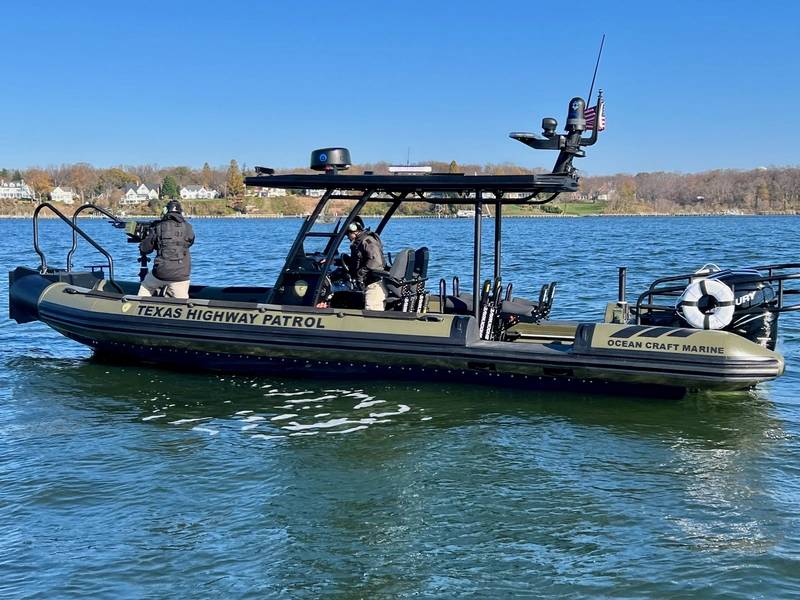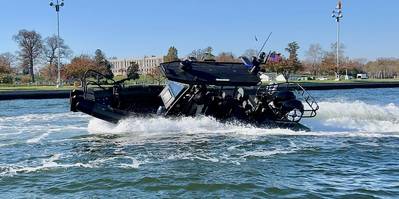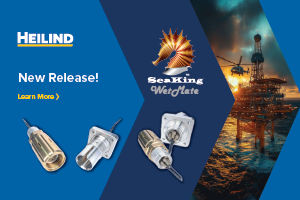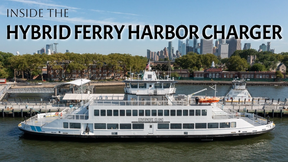Texas Beefs Up Security with New RHIBs
The state of Texas is putting into service a fleet of new, highly capable patrol boats as it works to detect, disrupt and deter criminal activity along the Rio Grande.
"Now, more than ever, it is imperative that our law enforcement officers and Texas National Guard soldiers adopt innovative solutions," Texas Governor Greg Abbott said during a recent visit tour the state’s enhanced assets along the U.S.-Mexico border. According to Abbott’s official website, the Governor has secured $4 billion in funding for Texas' border security efforts. “The state of Texas continues taking unprecedented action to deescalate and decrease the influx of dangerous criminals, illegal weapons, and deadly drugs like fentanyl into our country.”
As part of these efforts, the state has ordered a series of eight rigid hull inflatable boats (RHIB) for the Texas Department of Public Safety, Texas Highway Patrol, Tactical Marine Unit (TMU), which conducts reconnaissance and visible patrols alongside local and federal partners to combat drug and human traffickers in the intra-coastal waterways and the Rio Grande separating the U.S. from Mexico.
The first of the new 9.5-meter Law-Enforcement Interceptors, built by Annapolis, Md. based Ocean Craft Marine (OCM), was delivered in December, and the remaining seven vessels are scheduled to be delivered by early 2023.
 (Photo: Ocean Craft Marine)
(Photo: Ocean Craft Marine)
Among key features of the composite-hulled RHIBs, according to OCM vice president Todd Salus, is the builder’s proprietary concave reverse-chine Air-Hull, which gives the vessel extraordinary tactical turning capabilities. “In that boat at full throttle—I'm talking 60, 62 miles an hour—you can really throw the boat hard over into a tight turn. It doesn't skip, it doesn't slide, it doesn't have any surprises. It just turns like it's on rails like a Porsche, so you better be holding on.”
The RHIB also has some zip, as Salus noted, powered by twin Mercury Marine Verado 350 Pro outboard motors that give it a top speed of 62 miles per hour and quick hole-shot and time-on-plane. Each is controlled by Mercury Racing’s Digital Zero Effort Digital Throttle Shift (DTS) Control Binnacle while also utilizing Mercury’s new Active Trim technology, which the builder said increases fuel economy and mission range by providing automatic trimming of the outboard motors.
The vessels’ speed and agility will ultimately help to enhance the efforts of TMU, which runs an existing fleet of larger, hard-sided boats. Salus said that TMU sent representatives for the agency up to Annapolis to trial OCM’s 9.5-meter RHIBs prior to opening up its solicitation for the new vessels. “After experiencing the boat, they realized that they could utilize that boat in a way that their existing platforms couldn't be utilized.”
“With their existing vessels, when Texas law enforcement they would get in the kill zone and draw fire from the cartels, they would have to return fire because their boat was so big that it couldn't get out of its own way,” Salus explained. “They had to stay and fight for a while because they were stuck in the kill zone.
“After our boat, they realized that if you just put the hammer down, in about four seconds, you're in a different Texas county altogether. You don't have to stay there and fight it out and be taking rounds in your ballistic panel, Salus continued. “Great safety results from being able to position that boat where you're not in harm's way, and that's their biggest concern.”
According to Salus, TMU returned from Annapolis and decided to rewrite their mission profile based on their experience with OCM’s RHIB. “For us, this was a huge pat on the back that their standard operating procedure (SOP) for all of these years was going to change because of the performance of our boat.”
 (Photo: Ocean Craft Marine)
(Photo: Ocean Craft Marine)
The solicitation came quickly under emergency declaration by Governor Abbott, and OCM beat out several other builders to win an initial six-boat contract followed by a purchase order for two additional vessels.
Asked about solicitation requirements, Salus said, "Texas had some unique requirements for vendors registering. They had requirements for each company to have a published disaster recovery and business resumption plan. And some things that were unique to Texas."
For example, Texas has unique flag etiquette that allows its flag to be flown at the same height as national colors, as opposed to slightly below as is customary for other states. “They wanted three masts, like a triad, with the U.S. ensign and the Texas state flag, and then slightly lower they have a flag that says, ‘Come and take it.’ Salus said. “They're little touches, but they make a big difference because it's what the customer wants.”
Each RHIB will feature a hybrid CE closed-cell foam-filled tube-set, a heavy-duty full coverage T-top, mission-modular and reconfigurable shock-mitigating seating custom-built by Shockwave Seats, aluminum bow-guard with pushing knees, a long arms storage solution, a mounted crew serve weapons capability, advanced navigation and communications electronics to include color video, thermal imagery and a digital wireless headset crew-communication system from the David Clark Company.
“It's very hard today to differentiate yourself as a small boat builder,” Salus said, noting that most of the innovative technology and equipment—from engines to thermal imaging and communications—is known and available on the market to OCM and is competitors.
Asked about what sets OCM apart, Salus said, “It's really, I think, hull design, vertical integration, customization, the ability to be highly responsive to the customer's requirement for customer needs, making the boat fit their various mission profiles as closely as possible.”
 (Photo: Ocean Craft Marine)
(Photo: Ocean Craft Marine)
While OCM only builds to stock “in a limited way”, Salus described OCM as a “a customer bespoken boat builder” that caters to the varying demands of a wide range of government, commercial and even leisure customers.
“Every customer who ever came to us wanted something different. Their mission profiles were different, their operational environment was different. We need X, we need Y, this has to do this, and the dive team and the boarding operator. It's a custom boat.
“So, the one you built that you think is the Swiss Army knife, they don't want that one. Or they do, but the color's wrong. We really don't build for stock anymore, and we're able to build quickly enough and deliver the boats quickly enough along with training that we don't need to. We're fast.”
The delivery time, along with pricing, are important differentiators and always will be, Salus said.
“At the state, county, municipality, and local level, America is like 35,000 countries. The city of Oshkosh, the state of New York, the county of Montgomery, they all have a different acquisition process. And their funding oftentimes comes from bake sales and car washes.
“We have fire departments down the street buying boats from us, and they're working for years with fundraising to buy every piece of their equipment. Whether it's a small boat or a new engine, many of them are looking for grant money in order to finance, or help with grant money that might be available to them.
“In today's environment, if a customer comes to you with a need and you say, ‘I can fulfill that need, but it's going to be two years.’ You're not fulfilling anything; you're not helping at all.”
Earlier this year, Ocean Craft Marine announced it will invest more than a quarter billion dollars over the next 10 years establishing an independent maritime innovation laboratory called the Accelerator for Innovation in the Maritime Ecosystem (AIME). It will aim to “enable ideation, collaboration, cross-pollination and integration among and between maritime industry peers to accelerate industry innovation, especially within, but not limited to, the professional and military segments,” the company said.
OCM has placed an open invite to maritime companies, including existing partners, associates and peers, as well as players from other industries, to collaborate in AIME. "We are accelerating the innovation process by giving everyone a place to experiment, learn and grow together faster than anyone could do on their own, including the U.S. Military,” Salus said.













